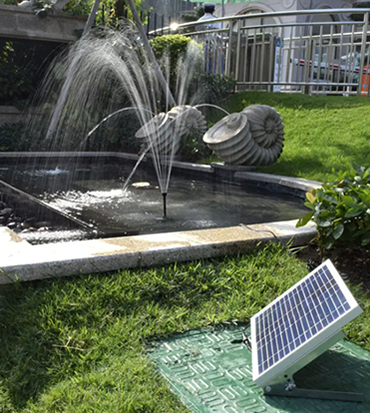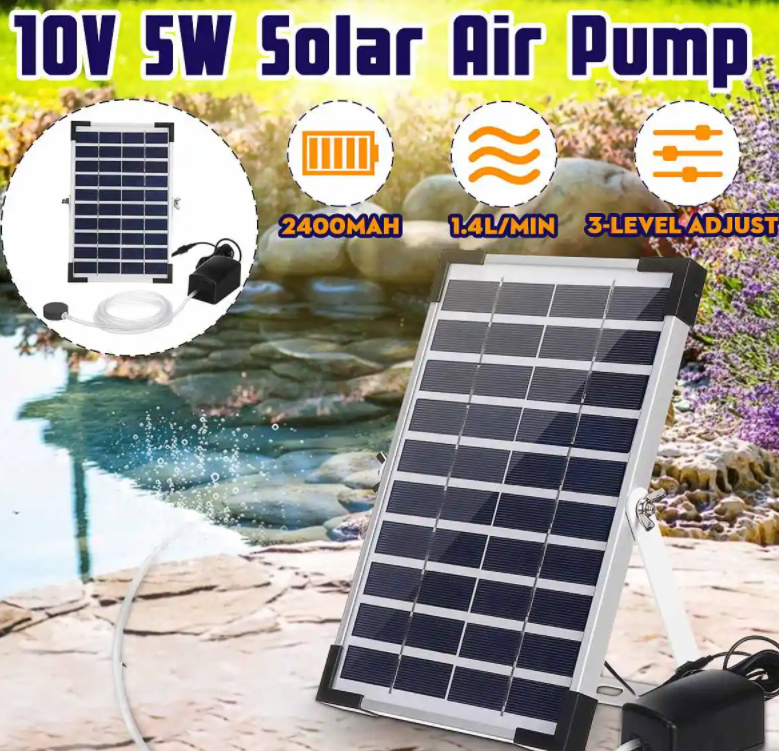1. Solar Fountain Pump

The most common type of solar pond pump is the fountain pump, which usually comes with both pump and fountain head included. These pumps are designed to be placed on the pond floor with the fountain attachment above the surface of the water. The solar panels will be connected to the pump and will power the fountain using the days’ sunlight.
Although you won’t get a huge amount of water height here, solar fountain pumps are surprisingly effective and great as smaller pond features. Since a certain depth is required for an optimal display, they may not be suited for deep ponds and often work best on shallow pond banks.
2. Solar Air Pumps

The solar air pump, which is used to provide extra aeration (oxygenation) to your pond water. They function the same as a fountain pump, with both solar panels and a battery for collecting charge. Instead of powering a water feature, though, they act as a simple method of adding oxygen to your water. If you do not have a water feature in place, such as a fountain or waterfall, having an extra means for oxygenation may be helpful. This is especially true if you have a pond stocked with fish, as more dissolved oxygen will improve fish health and water quality.
3. Surface Pumps
Surface Pumps are typically less expensive than submersible pumps and can draw water from a spring, pond, river, or tank, and push it far uphill and through long pipes to fill a storage tank or to pressurize it for home use or for irrigation, livestock, etc. The pump may be placed at ground level, or suspended in a well in some cases. For trouble free operation, low energy use and 15 year life span we recommend the ATO series solar pumps. The ATO Booster pumps are perfect for pressurizing water in an off grid home, while the ATO Solar Slow Pumps can move water at extremely low energy requirements.
All pumps are better at pushing than pulling, since the vacuum a pump can draw is limited to atmospheric pressure (about 14 psi). At sea level, a pump can be placed no higher than 10 or 20 feet above the surface of the water source (subtract one foot per 1,000 feet elevation). Most wells are much deeper than this and therefore require a submersible pump, which can push the water up to the surface.
Suction piping for surface-type pumps must be oversized a bit and not allow air entrapment (much like a drain line) and should be as short as possible.
Pumps can push water very long distances through a pipe. The vertical lift and flow rates are the primary factors that determine power requirements.